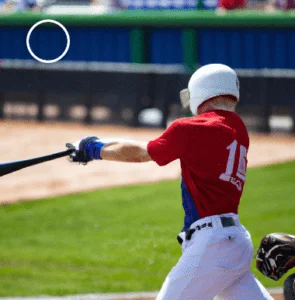Being left-handed in baseball can sometimes be a benefit, but it can also be a drawback in certain positions. To maximize your potential as a left-handed baseball player, you must understand which positions you’re most suited for. In this post, we’ll look at the finest position for left-handed baseball players and offer advice on flourishing in it. Understanding the subtleties of playing different positions as a lefty may make a significant difference in your performance on the field, whether you’re a seasoned veteran or just starting. Therefore, let’s begin and find the best position for left-handed baseball players.
Best Position for Left-Handed Baseball Players
While left-handed baseball players may have significant disadvantages in certain positions, they may thrive in others. Some of the best positions for left-handed players are as follows:
Pitcher:
Because of the spin on their pitches, left-handed pitchers have a massive edge against right-handed batters. Pitching is thus one of the finest positions for left-handed athletes.
First Base:
Left-handed first basemen have a considerable advantage since their glove hand can reach further into the field. As a result, they are well-suited to making tough plays and collecting inaccurate throws from other players.
Outfield:
Left-handed outfielders are in great demand because of their ability to make difficult catches and throw the ball back to the infield more swiftly and accurately. Left-handed outfielders may also cut off hits in the left-center gap, which is especially difficult for right-handed outfielders.
Relief Pitcher:
Left-handed bullpen pitchers are especially important since they can pitch to both left-handed and right-handed batters. Because of their adaptability, they are an asset to any squad.
It should be noted that left-handed players may also flourish in other positions, but these four are especially well-suited to their skill set.
Read: How to slide in baseball
Advantages and Disadvantages of Being a Left-Handed Baseball Player
You have certain natural benefits and drawbacks as a left-handed baseball player compared to your right-handed competitors. Knowing this might help you choose which roles in the field you would be best suited for.

Advantages:
Pitching:
The ability to pitch is one of the most prominent benefits for left-handed players. Left-handed pitchers’ pitches might be more difficult for right-handed hitters to hit because of the way the ball spins off their fingertips. This can provide a significant edge to left-handed pitchers in the game.
First Base:
First base is another position where left-handed athletes have an edge. Left-handed first basemen may extend further towards the field and make more challenging plays with their glove on their right hand than right-handed first basemen.
Read: Batting gloves for Baseball
Disadvantages:
Catcher:
Catcher is one position where left-handed athletes have a significant disadvantage. Because most hitters are right-handed, left-handed catchers would have to throw across their body to throw to second base, making it challenging to catch baserunners.
Third Base and Shortstop:
Left-handed athletes are also at a disadvantage at third base and shortstop, which demand quick responses and accurate throwing. Because most hitters are right-handed, left-handed third basemen and shortstops may need help making the rapid pivot to throw first base.
Knowing the benefits and drawbacks of being a left-handed baseball player helps you determine which positions best suit your skill level. In the next part, we’ll explore the ideal positions for left-handed players in greater depth.
Tips for Left-Handed Baseball Players
If you’re a left-handed baseball player, you can use several tips and strategies to improve your performance on the field. Here are some tips to consider:
- Practice Your Footwork: Left-handed players often need to make quick pivots to throw to first base or other positions. Practicing your footwork can help you make these throws more accurately and quickly.
- Train Your Non-Dominant Hand: While left-handed players have an advantage in some positions, they may struggle with specific tasks that require their non-dominant hand. For example, left-handed catchers may work to throw out baserunners because they must use their non-dominant hands to throw the ball. Training your non-dominant hand can help you become more versatile on the field.
- Focus on Pitch Selection: As a left-handed pitcher, your pitch selection can be essential. Understanding the strengths and weaknesses of right-handed batters can help you choose pitches that will be more difficult for them to hit.
- Use Your Advantages: Left-handed players have several inherent advantages, such as pitching and playing first base. Capitalizing on these advantages can help you excel in the field.
- Study the Game: Understanding the nuances can help you improve your performance. Watching games, studying game footage, and working with coaches can help you refine your skills and become a better player.
By following these tips, left-handed players can improve their performance on the field and make the most of their unique abilities.
Read: Proper Batting Stance For Baseball
The Importance of Flexibility and Versatility for Left-Handed Baseball Players

While left-handed players may have certain advantages in specific positions, they must be flexible and versatile on the field. Here’s why:
- Increased Value to Teams: Left-handed players who can play multiple positions are more valuable. This is because they can fill in when other players are injured or need a rest, making them valuable assets to any team.
- More Opportunities: Left-handed players who are flexible and versatile can take advantage of more opportunities on the field. For example, a left-handed player who can play both first base and outfield may be more likely to get playing time than a left-handed player who can only play first base.
- Enhanced Performance: Playing multiple positions can improve a left-handed player’s performance on the field. By being more versatile, left-handed players can adjust to different game situations and utilize their strengths.
- Personal Development: Being flexible and versatile can also help left-handed players develop their skills and become better overall players. By learning new positions and techniques, left-handed players can become more well-rounded and adaptable.
Finally, flexibility and adaptability are valuable skills for any baseball player but are more practical for left-handed players. Left-handed athletes may raise their worth to teams, take advantage of more possibilities on the field, improve their performance, and develop their talents by being flexible and adaptable.
FAQs about left-handed players:
Q: Are left-handed players at a disadvantage in baseball?
No, left-handed players have several advantages in baseball, including pitching effectively and playing first base easily. With the proper training and development, left-handed players can become valuable assets to their teams.
Q: Can left-handed players play any position in baseball?
Yes, left-handed players can play any position in baseball, but some positions may be better suited for left-handed players. For example, left-handed pitchers and first basemen have a natural advantage due to the position’s proximity to first base.
Q: Is it more challenging for left-handed players to find equipment?
Most equipment manufacturers produce gear for left-handed players, including gloves, bats, and helmets. Left-handed players may need to look for specific equipment designed for lefties, but they should be able to find what they need.
Q: How can left-handed players improve their performance?
Left-handed players can improve their performance by working on their non-dominant hands, developing their versatility, and practicing key positions such as pitching and first base. By doing so, they can become more well-rounded and influential players.
Q: Are left-handed players less common in baseball?
Yes, left-handed players are less common in baseball, making up only 10% of all players. However, this can work to their advantage, as they can bring a unique perspective and set of skills to the sport.
Conclusion:
To summarize, left-handed baseball players have distinct talents and advantages that can help them flourish. Left-handed players can stand out and make a difference in the game, from being great pitchers and first basemen to using their non-dominant hands and being flexible and adaptable on the field. Left-handed athletes may become significant assets to their teams and achieve success on the field by knowing these advantages and trying to improve their talents.
Consider focusing on your non-dominant hand, strengthening your versatility, and practicing crucial positions like pitching and first base if you’re a left-handed player trying to enhance your game. You will become a more well-rounded and effective player as a result.
Ultimately, left-handed players are necessary for baseball because they add a distinct viewpoint and set of talents to the game. Understanding and using left-handed players’ advantages may help you succeed on the field, whether you’re a left-handed player or a coach wanting to develop a winning squad.


